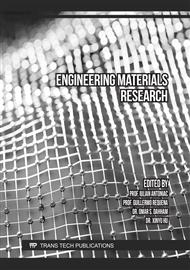p.3
p.11
p.17
p.23
p.31
p.45
p.55
p.63
Influence of Grain Boundary Morphology on DDC Sensitivity of Nickel Base Alloy Deposited Metal
Abstract:
Effect of grain boundary morphology on ductility dip cracking (DDC) sensitivity of nickel base alloy inconel52 deposited metal was researched by welding thermal simulation method and high temperature tensile test. The sample was hold at 1300 °C for 2S ~ 10s and then stretched at its DDC sensitive temperature 1050 °C at different tensile rates. The DDC sensitivity was compared by reduction of area (VoA) of tensile test sample. The results show that straight grain boundary reduces VoA, precipitates in grain boundaries increases VoA, and VoA increases with the increase of tensile rate. Straight grain boundary causes stress concentration and strain localization at the trigeminal grain boundary, curved grain boundary decreases the maximum Mises stress which make more uniform stress distribution. Precipitates on the grain boundary can play a role of locking the grain boundary migration and disperse the strain concentration at the trigeminal grain boundary. The lower the strain rate, the longer the deformation time, which will lead to decrease of dislocation movement rate. The smaller the critical shear stress of grain boundary sliding, the smaller the deformation resistance, and the full progress of dislocation movement and climbing. Effect of strain rate on DDC needs more research.
Info:
Periodical:
Pages:
11-16
Citation:
Online since:
December 2022
Authors:
Price:
Сopyright:
© 2022 Trans Tech Publications Ltd. All Rights Reserved
Share:
Citation:



